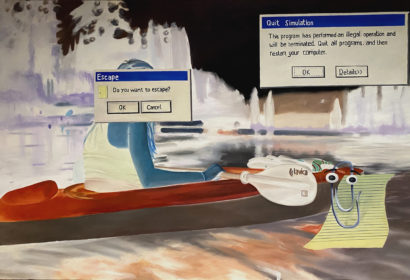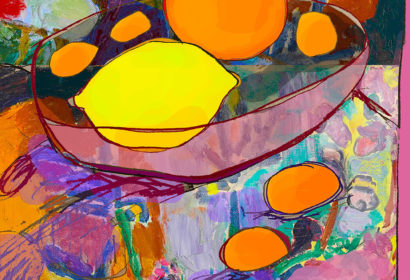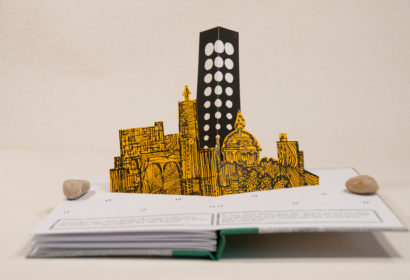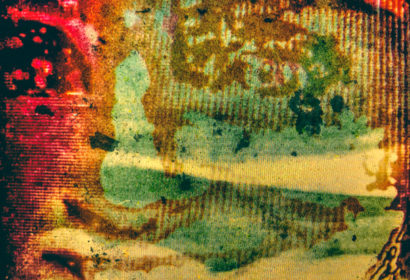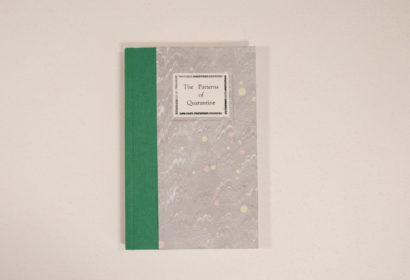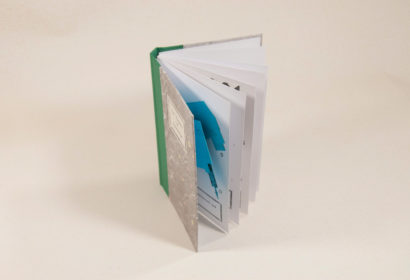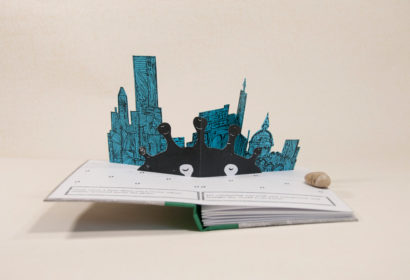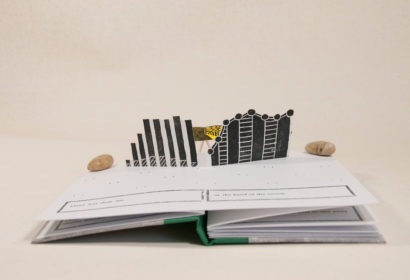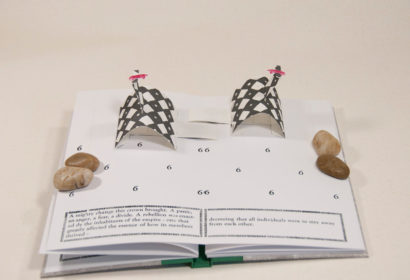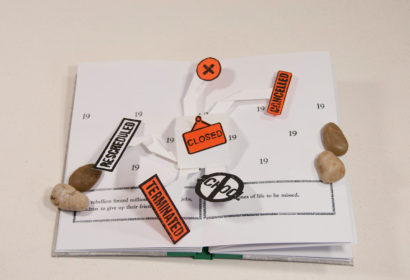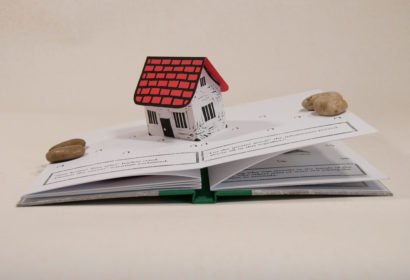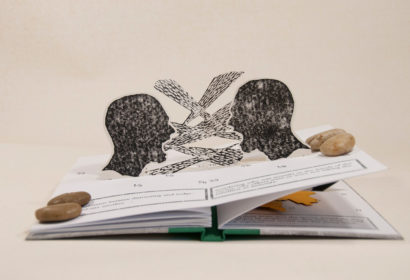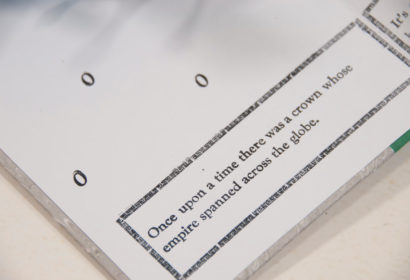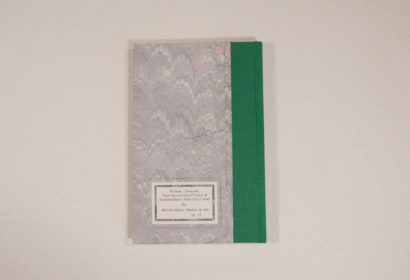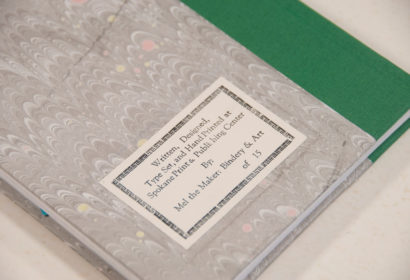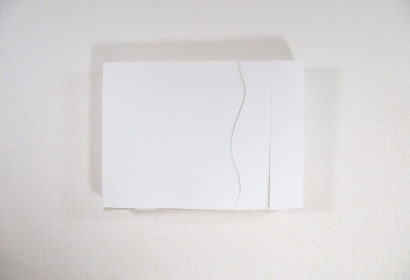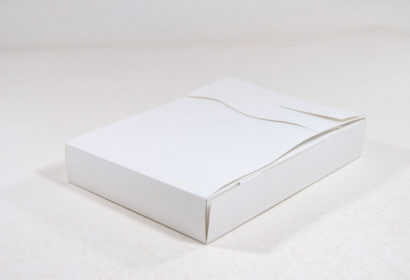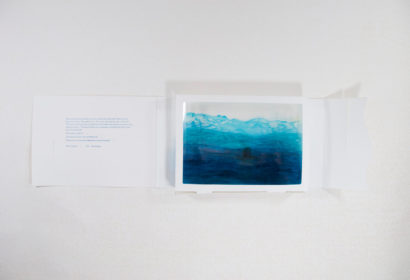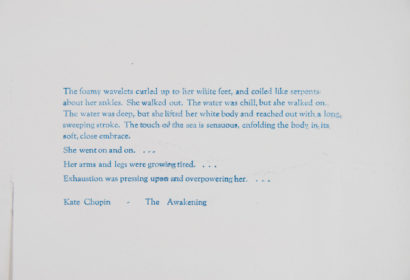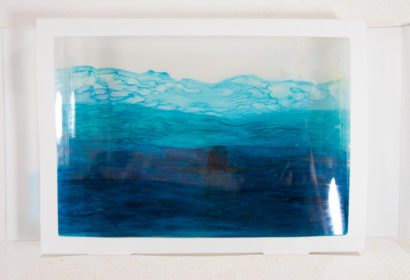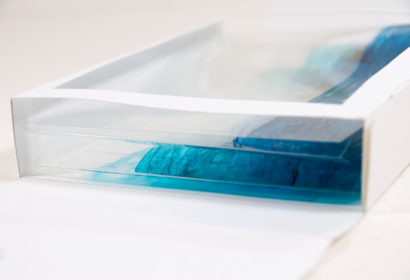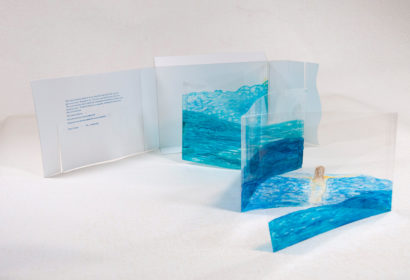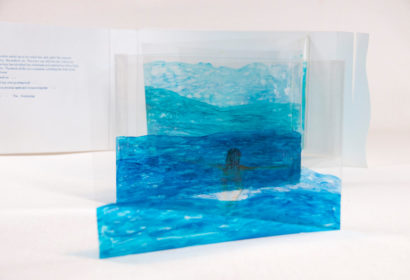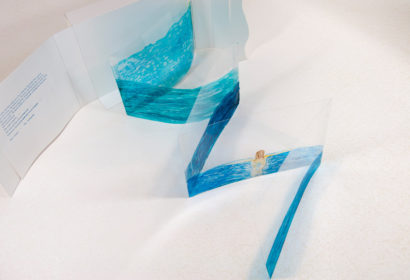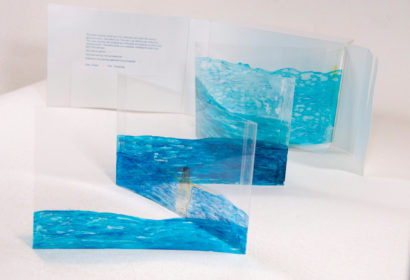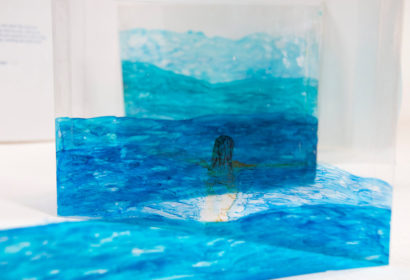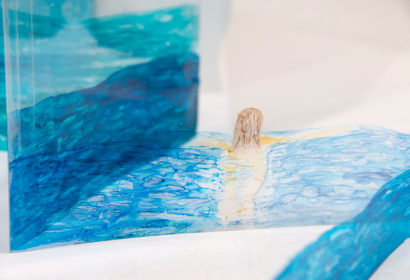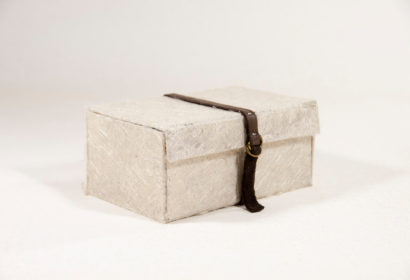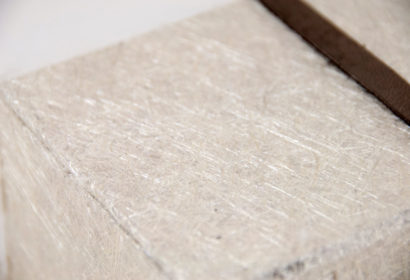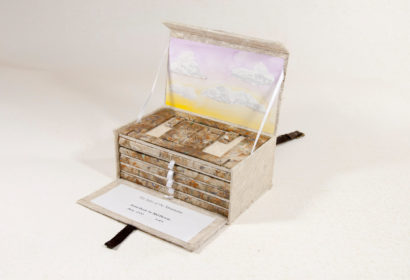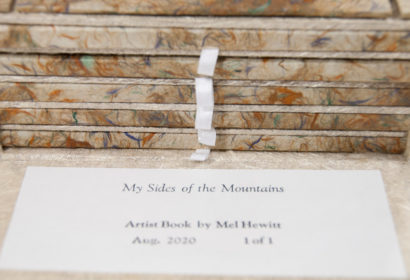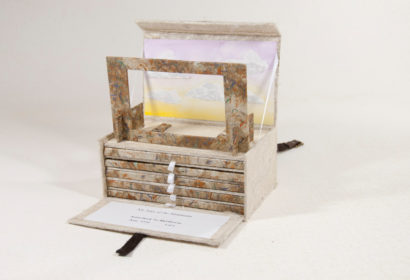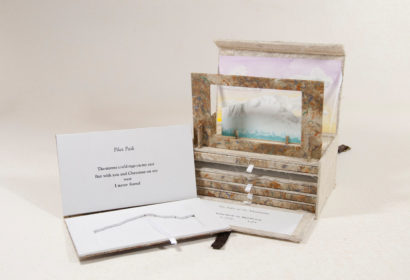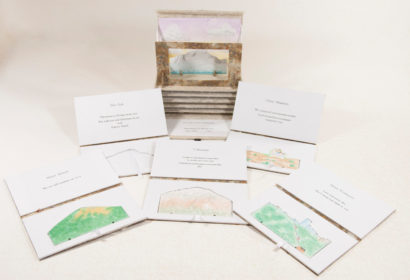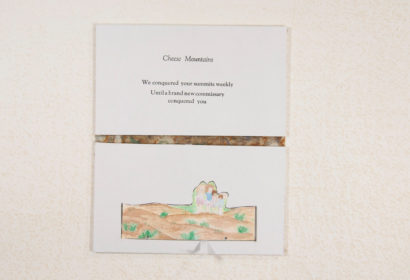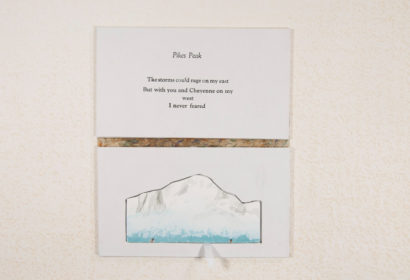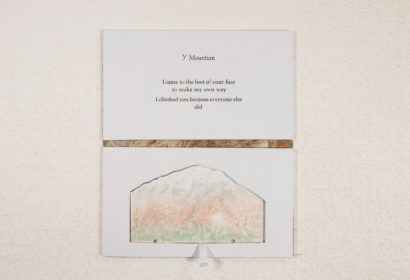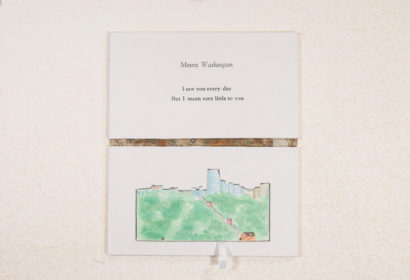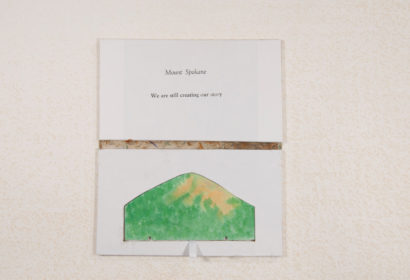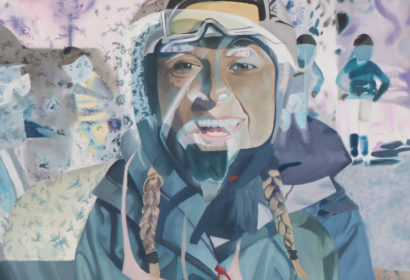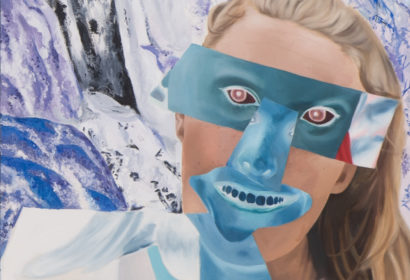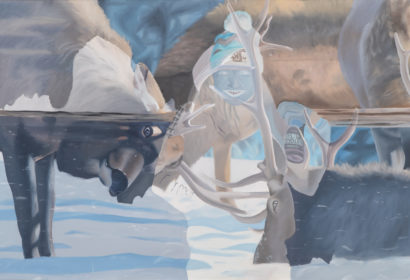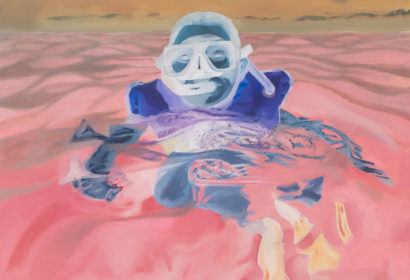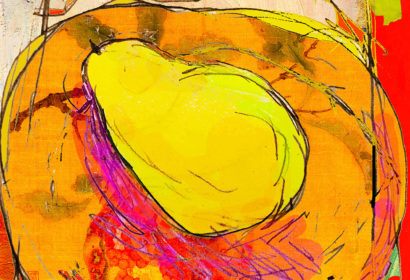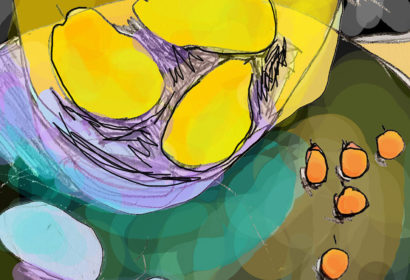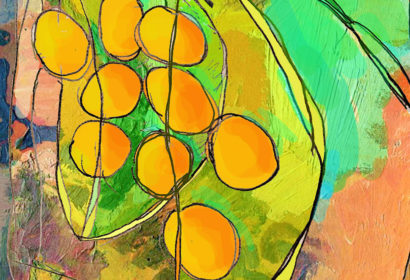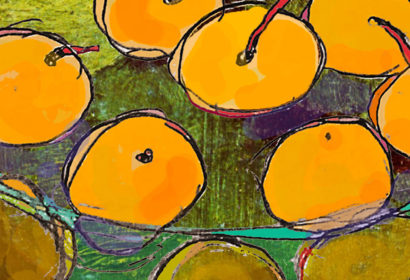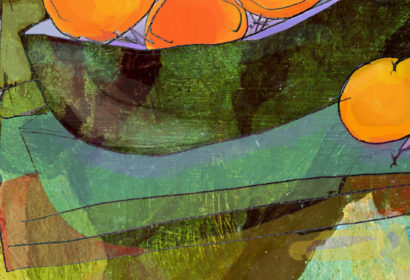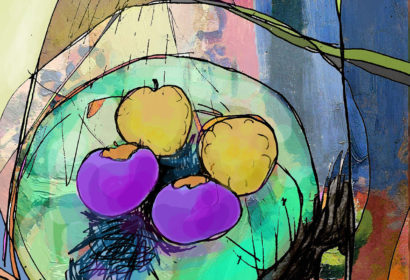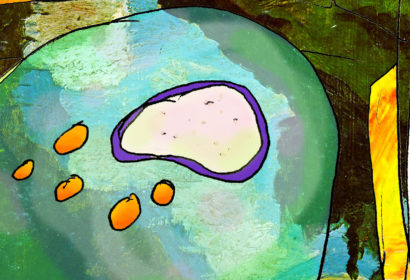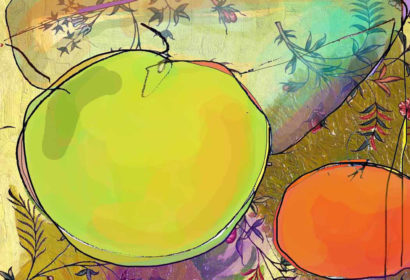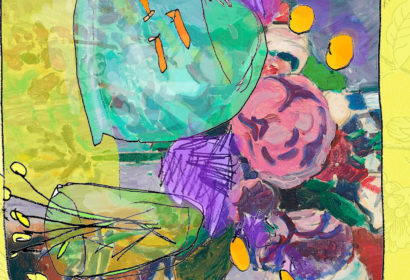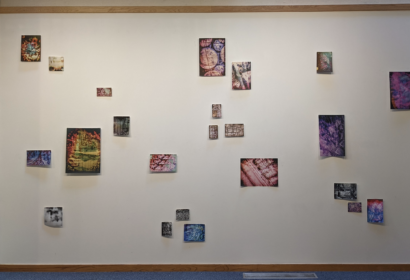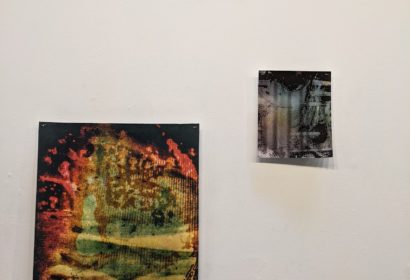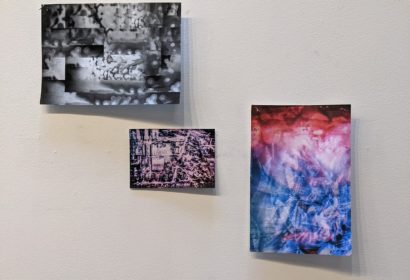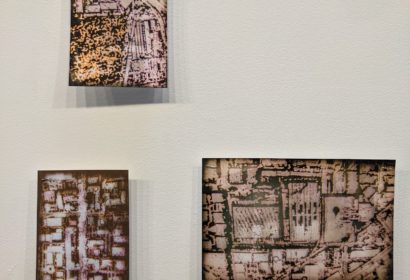Spokane Arts is excited to present Bright Spot online and in person at the Chase Gallery September 1 through October 29. Bright Spot showcases five artists all using familiar materials in fresh and inventive ways to explore the varied connections between everyday experiences and how we capture, remember, and communicate them. Featuring work by Mel Hewitt, Emily Hawkins, Jerry Slough, Callie McClusky, and Dana Squires, this group exhibit includes handmade art books, digital prints on glass, photography, and paintings. Each of these artists tackle complex subjects (including memory and identity) in inventive and playful ways. Although they work in different mediums and with vastly different styles, the resulting artwork shares a vibrancy and curiosity that connects them.
The Chase Gallery, located inside Spokane’s City Hall, is currently open for visitors whenever City Hall is open to the public. Stop by and see the gallery Monday – Friday, 8 a.m. to 5 p.m. (Gallery access may be limited Tuesday mornings.)
Bright Spot
Dive deeper into learning about the artists that created the pieces below and see more of their artwork!
Emily Hawkins
artist statement
I place abstract and anti-sentimental lenses on objects and places commonly conceived of as representational, interpreting my environment through color, shape, and negative space. In my work, I leverage the way painting, photography, and other documentary modes without narrative or context facilitate both remembering and forgetting—how an overabundance of material can itself become a kind of negative space—to examine what holds innate meaning, value, and interest. Often my work leans into an obsession with preservation. I seek to create a visual translation of compound memories, treating apparently mundane household objects, landscapes, and experiences as visually compelling mediums and subjects. For example, my work with photographs, children’s drawings, and clothes handed down questions the expectation that mothers will document and preserve every detail of family history. I distinguish between the impulse to keep records of what happens in daily life and the more authentic but perhaps impossible desire to preserve the emotional experience of it.
artist bio
Emily Hawkins holds a BFA from The University of Utah in Salt Lake City. Currently based in Salt Lake City, Utah, she is a visual artist who explores family life through abstract and anti-sentimental lenses, questioning the expectations placed on mothers as family historians. Her work has appeared in several publications and gallery shows, including Marie Claire magazine, Terrain Spokane’s Art in the Time of Quarantine, and Saranac Art Projects’ Kitchen Things.

Emily Hawkins
Friday Papers #11
Archival Pigment Print on Canvas
36 x 36 inches
2019
$950
Friday Papers
Friday Papers began with the start of a new school year. The piles of papers my four children brought home each Friday began to pile up, stuffed into drawers to “look at later”. There were messages about fundraising lunches, after-school Chinese classes, spelling tests, and kindergarten choir concerts all printed in bold ink on 8.5×11 paper in eye-catching neon pinks and yellows, greens and blues that drew me in. These objects began to seem less like informative announcements and more like art materials, visual testaments to both the ephemeral nature of childhood materials and the mother’s apparent duty to attend to and preserve each tiny detail in case they might hold enduring value. In this series, I abstract the materials themselves in order to question the value of the history apparently embedded in them and the role of the mother as keeper of that history for her children.
Callie McCluskey
artist statement
People today have the chance through social media to share every aspect of their daily lives. There is a cultural pressure fueled by modern media and consumerism where one is compelled to filter this digital identity into something flawless and exciting. The paintings in my series Digital Identity are a combination of my favorite memories and moments, integrated with recognizable imagery from social media sites. The painting’s color schemes are purposely inverted, forcing the audience to rely on a device such as a Smartphone to view the piece in its entirety. Using AR goggles, the viewer now sees the abstracted forms within the paintings transform into an entirely new visual narrative.
The process that I want the viewer to engage with is two-fold. Upon first impression, the paintings themselves are constructed with dismal color-schemes or unrecognizable features. Once the audience interacts with the digital inversion, the paintings shift to a bright, cheerful and dynamic pallet. This is intended to be a metaphor for how social media has the tendency to make people’s worlds appear more desirable. The consequences of this consumer-driven reality are worth a deeper critique.
artist bio
Callie is a 2019 graduate from Washington State University, receiving her BFA as well as a second degree in Digital Technology and Culture. While pursuing this education path, she found her passion for art lies somewhere between these two fields. As she explored the world of graphic design, animation, and augmented reality, she grew an appreciation for their ability to enhance and expand traditional artistic mediums. Her subject matter finds inspiration from the people and situations that surround her, usually gravitating towards social critique. Her BFA thesis series, Digital Identity, utilizes augmented reality within the paintings. The idea stemmed from the daily dependence our culture has with technology, as well as social media. She is continuously working towards expanding this body of work.
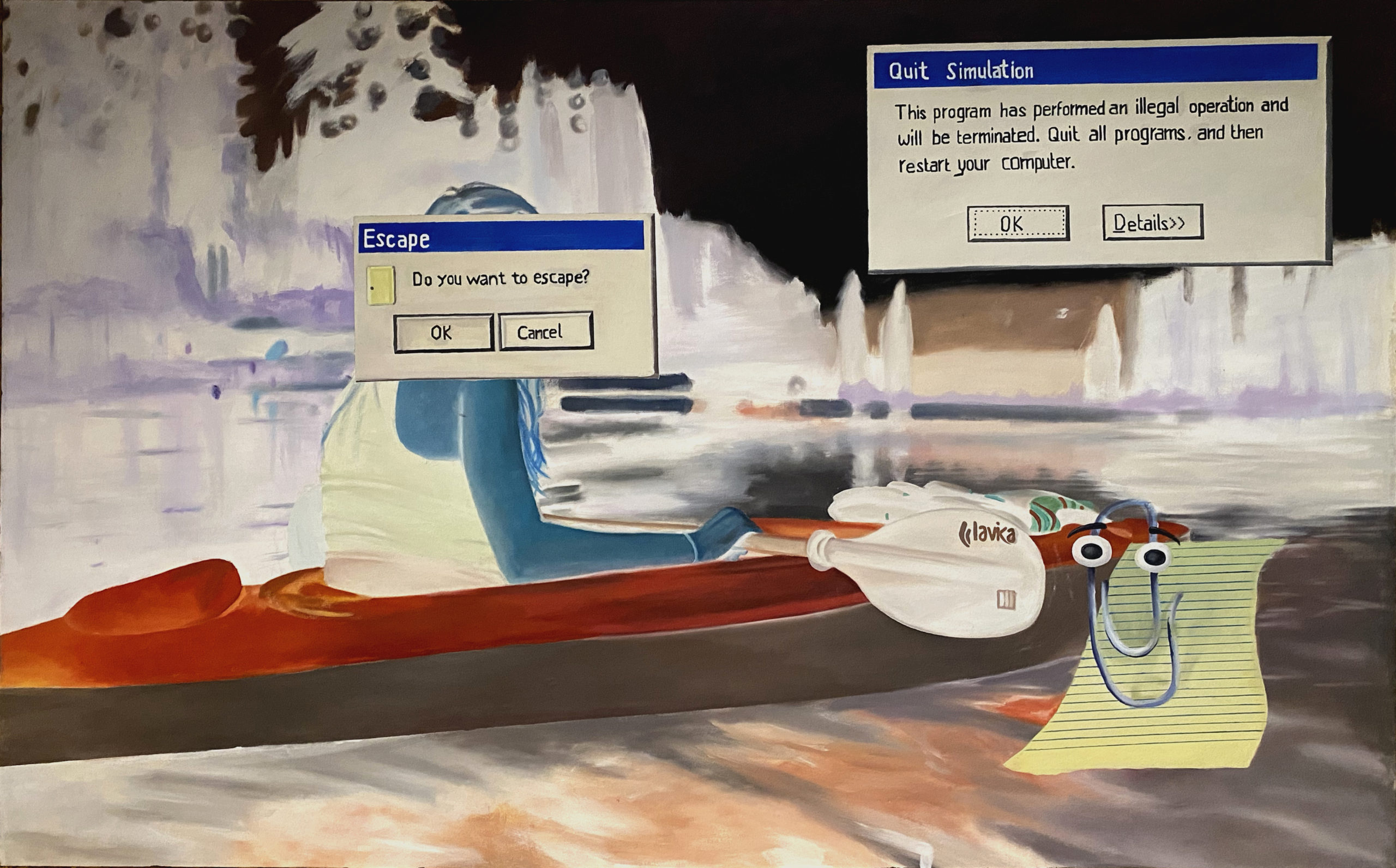
Callie McCluskey
Thomas Lake
Oil on Canvas
84 x 60 inches
2020
$1,200
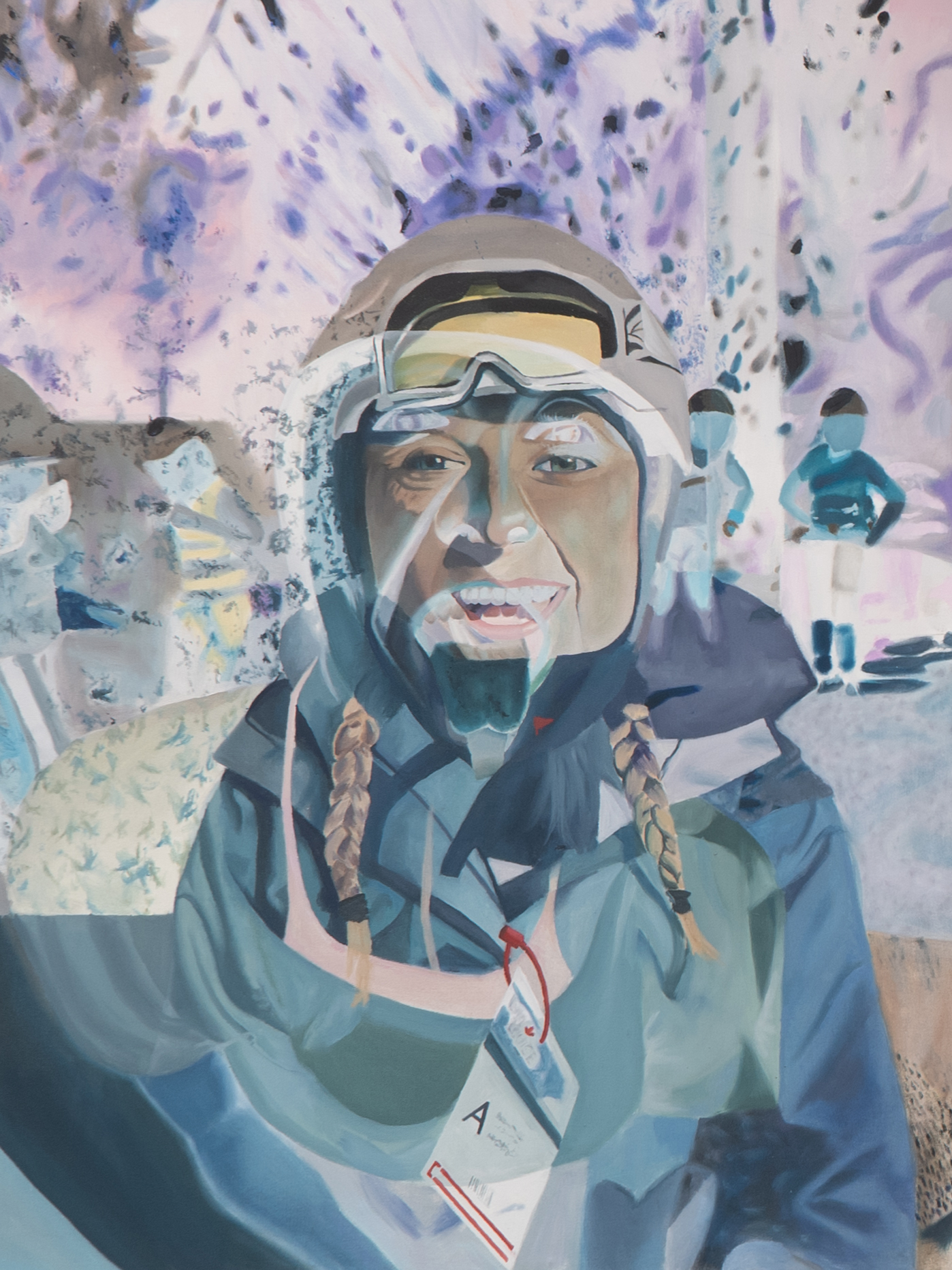
Callie McCluskey
Belize
Oil on Canvas
36 x 48 inches
2018
$900
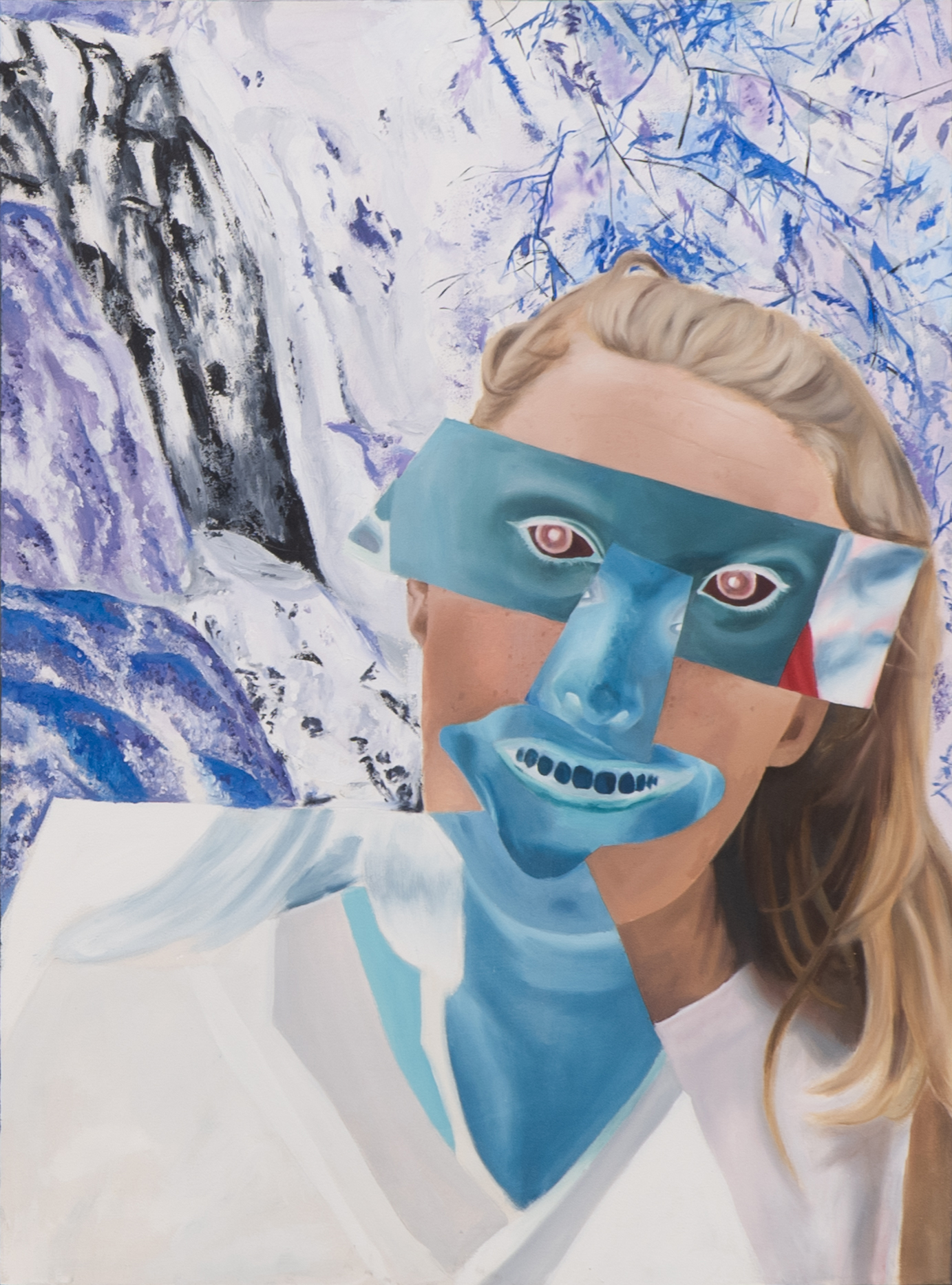
Callie McCluskey
Sweet Creek Falls
Oil on Canvas
36 x 48 inches
2019
$900
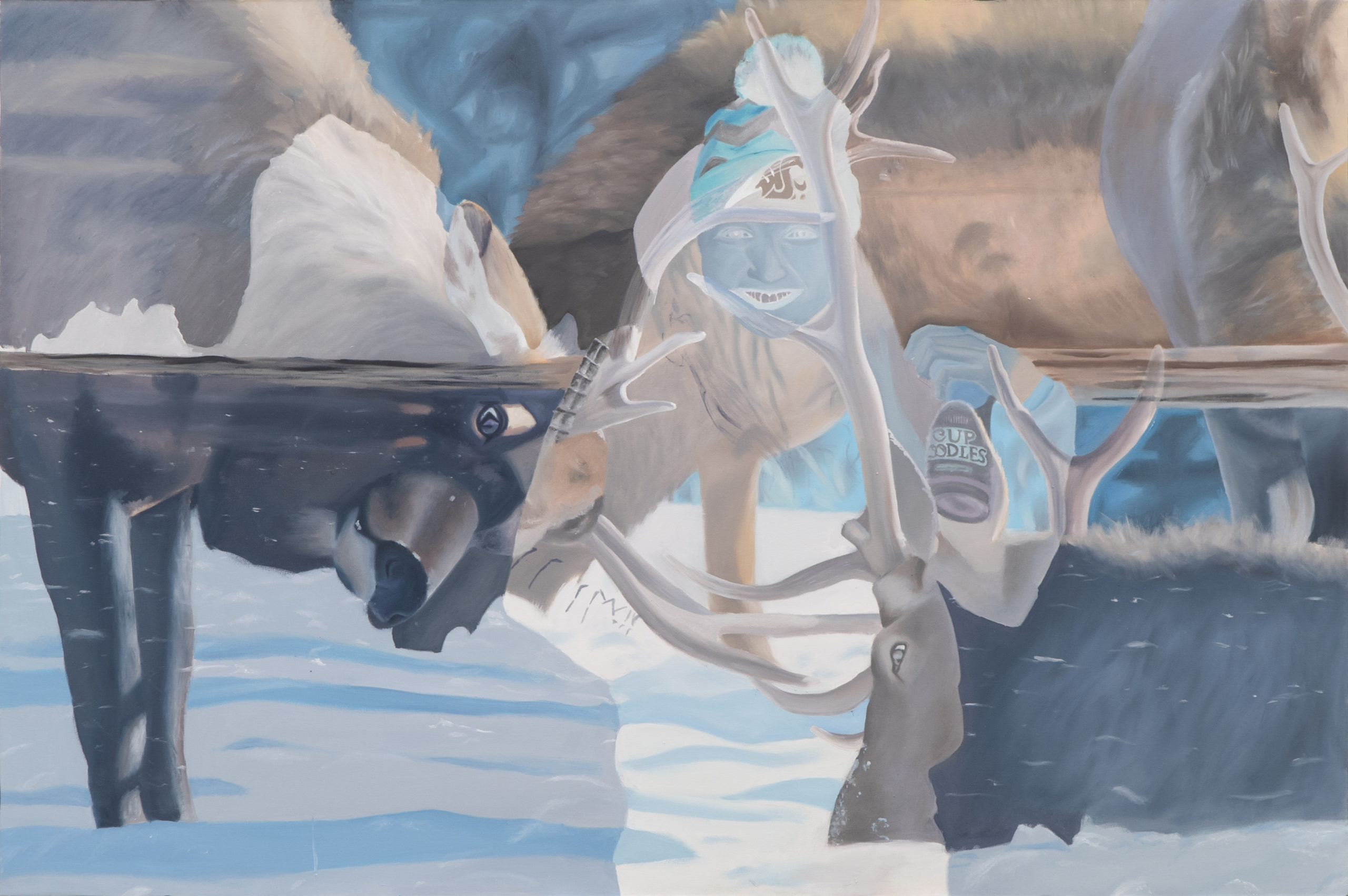
Callie McCluskey
Cannon Beach
Oil on Canvas
72 x 48 inches
2019
$1,200
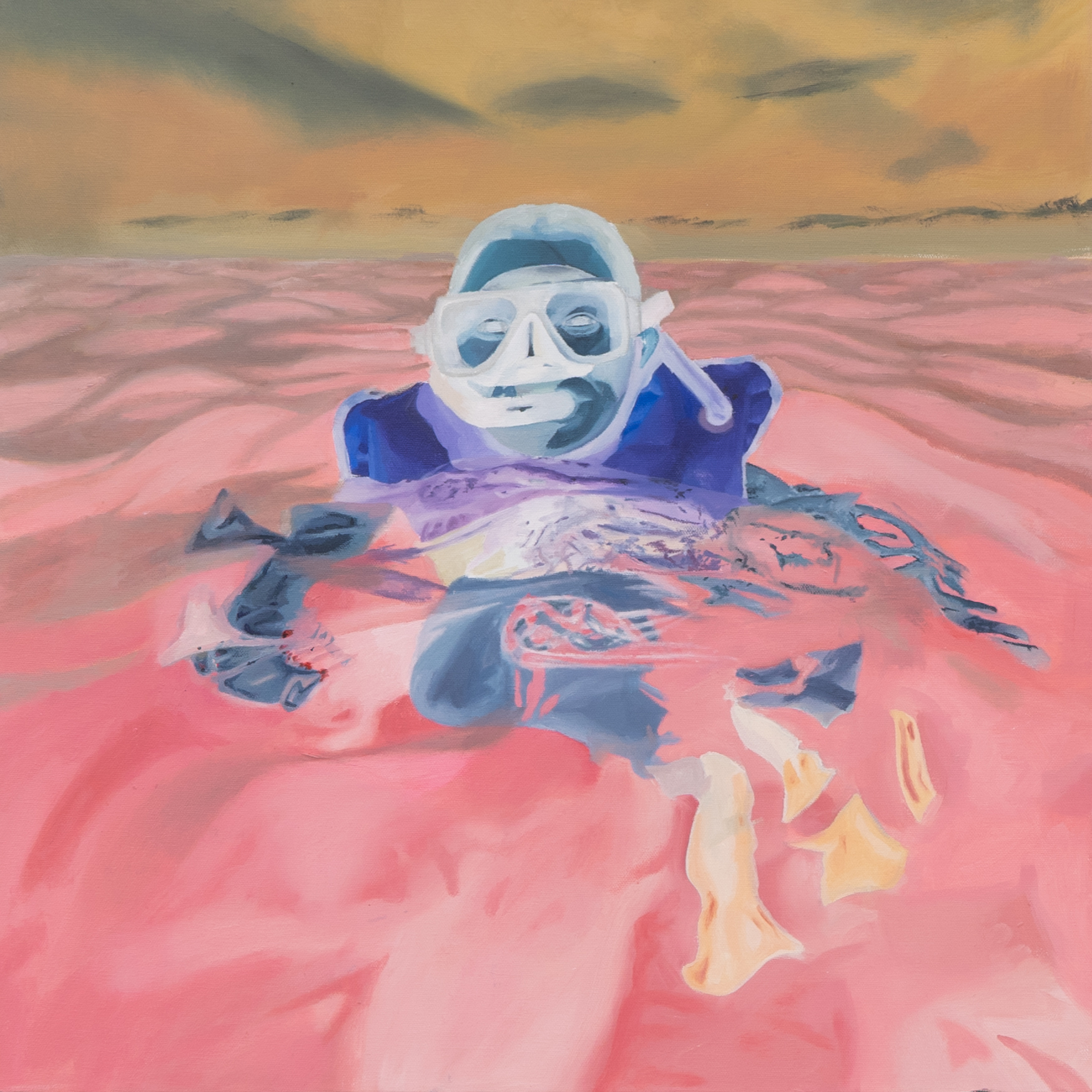
Callie McCluskey
The Ocean
Oil on Canvas
24 x 24 inches
2019
$800
Want to see the digital versions of Callie McCluskey’s paintings?
Come visit the Chase Gallery in Spokane City Hall to view her paintings with AR goggles!
Dana Squires
artist statement
My work is about the sensual shape of a fig and haikus about persimmons, and the space between. I am interested in flattened shapes and the relationship between shapes, the shape of the space between shapes, the negative space, and the tension of the shapes and the edge of the image.
With the emphasis on shape, my work is abstract in many ways. It has always been representational. The fruit is iconic. Still Lifes are a way to bring focus and meaning to everyday objects. I like the simple domestic “everyday” aspect – a bowl of fruit on a table on a patterned tablecloth. Textiles, decoration, and the culinary arts are the vernacular artistic life of women across cultures, and often their only creative outlet. Food and the table, this is women’s work.
My work is uncomplicated, the music between the notes.
artist bio
Although she has lived in the Northwest her entire adult life, Dana Squires was raised among the grapefruit trees in a small blue-collar town in Southern California. Her heritage dates back to her great-grandparents’ citrus and avocado groves in the mid-1800s. A kumquat tree, lemons outside the back door, oranges. The shapes, the smell, the connotations of citrus evokes mid-century California. Dana is a mark maker on paper, a person who draws. The artwork may end up as a painting or something else completely, but all her work has a pencil drawing at its core.
www.facebook.com/DanaSquiresArt/
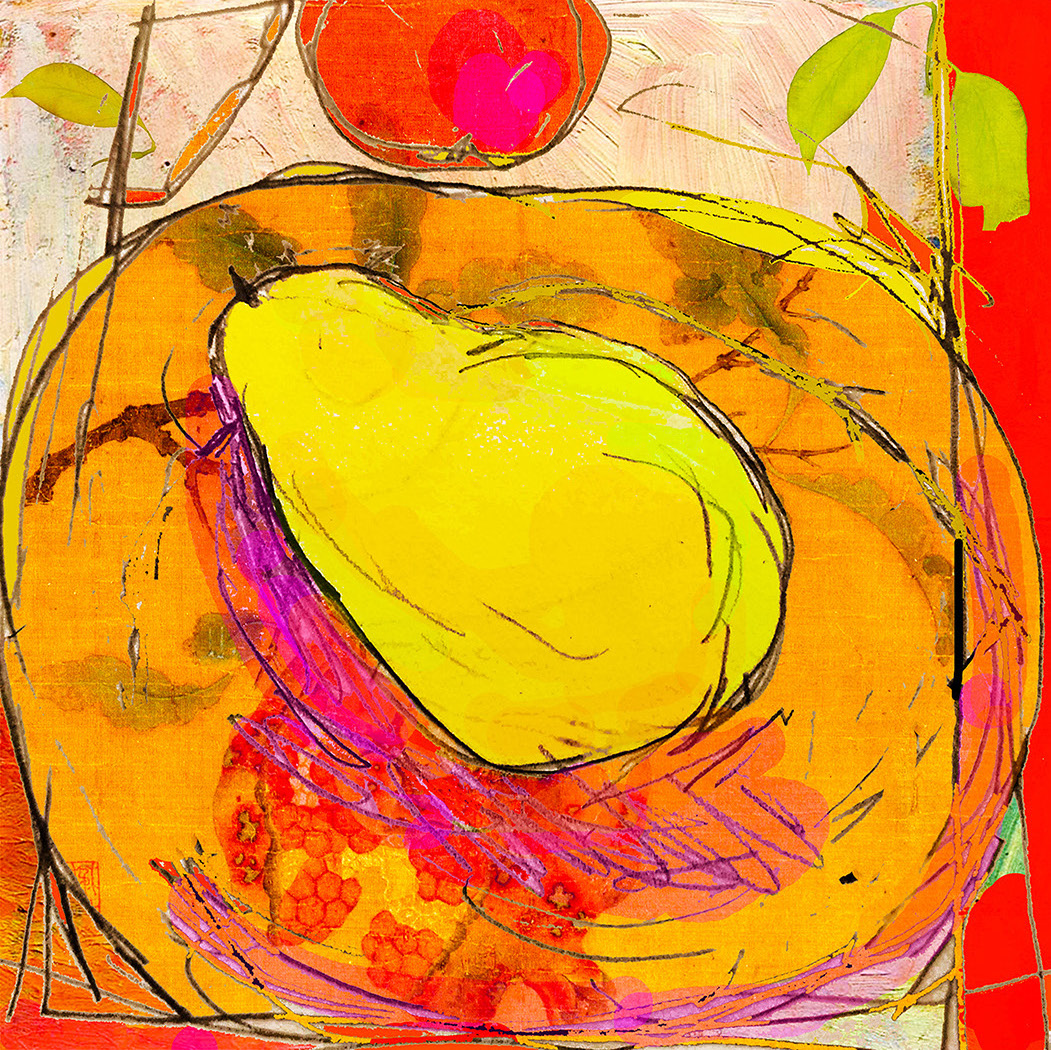
Dana Squires
Pear on Cracked Plate
Pencil sketch, uploaded and digitally “painted,” then printed on glass panel
23 x 23 inches
2019
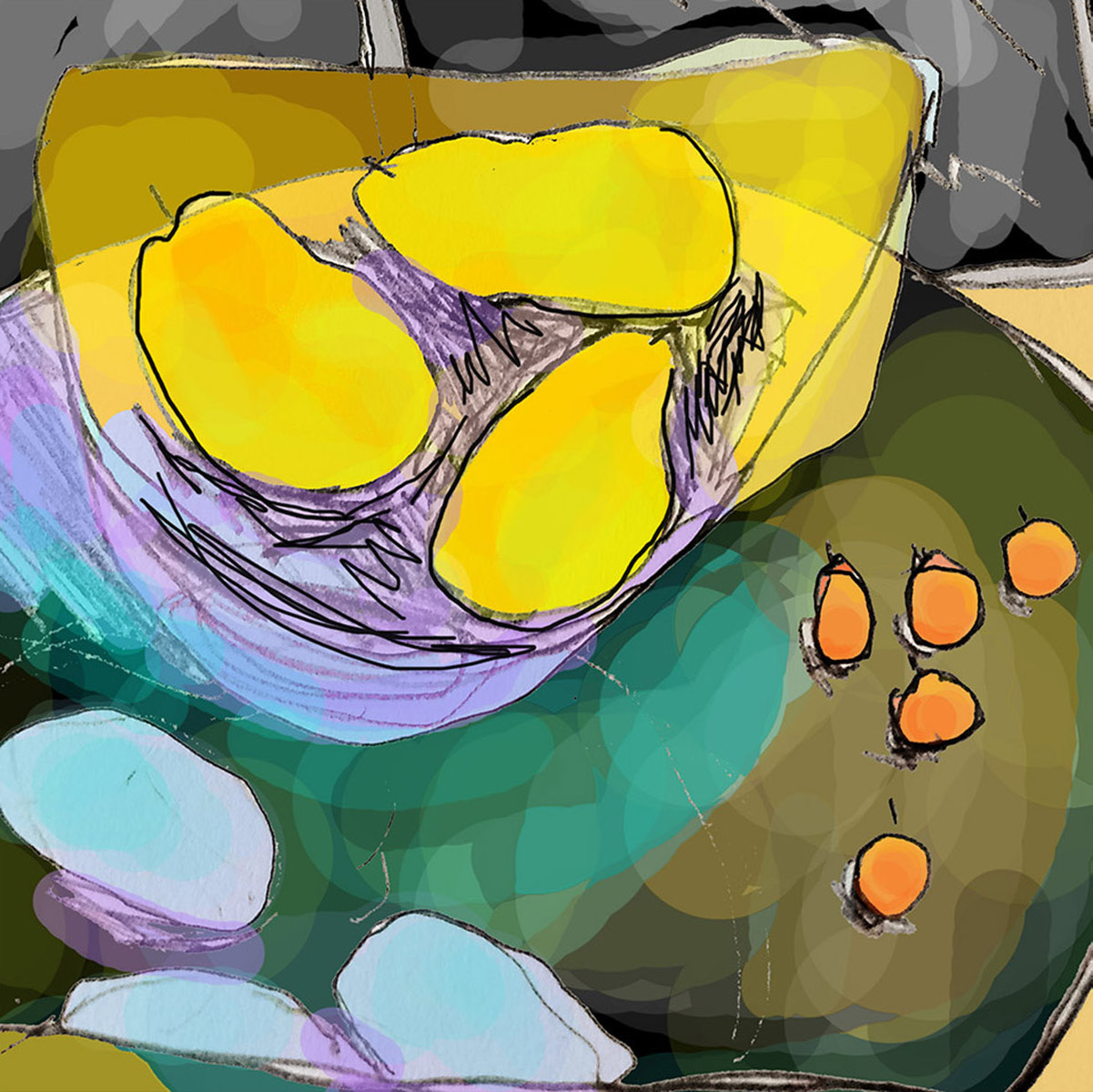
Dana Squires
Three Pears with Kumquats
Pencil sketch, uploaded and digitally “painted,” then printed on glass panel
23 x 23 inches
2019
Music is the space between the notes— Claude Debussy
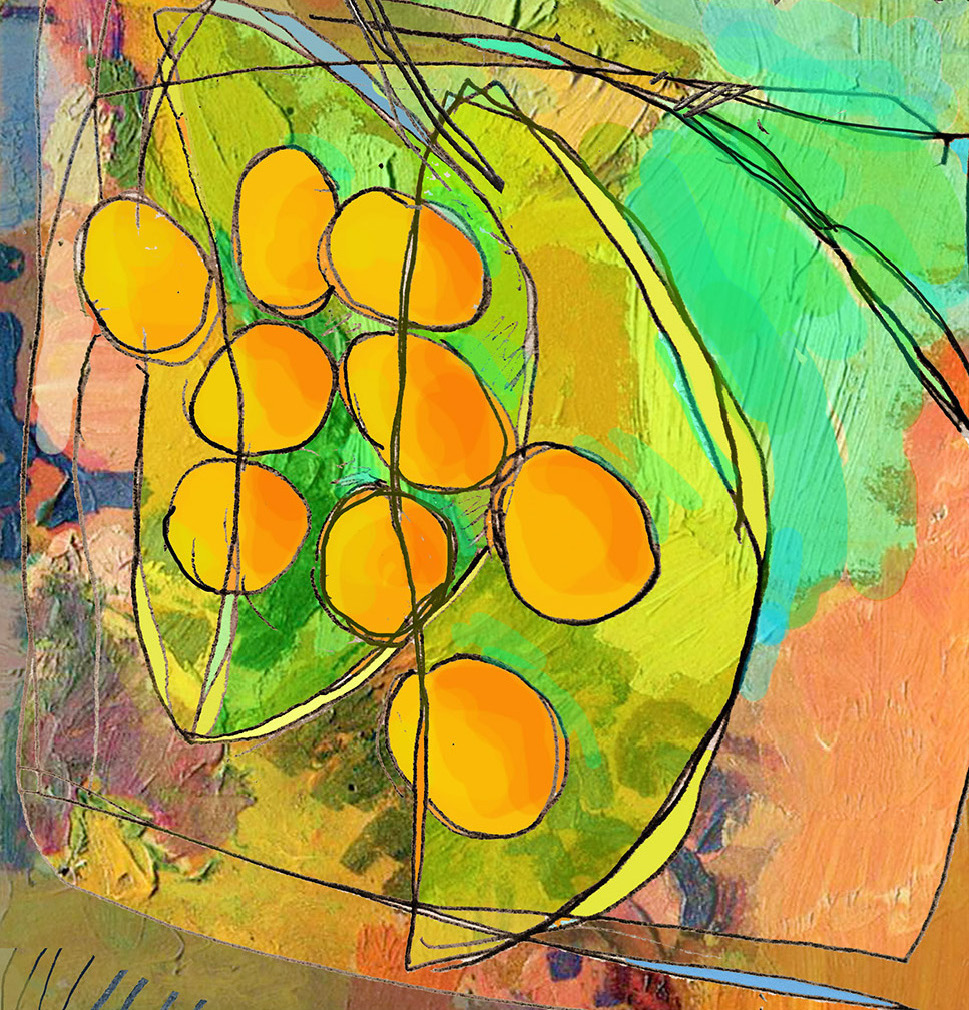
Dana Squires
Oranges in 2 Bowls
Pencil sketch, uploaded and digitally “painted,” then printed on glass panel
11 x 11 inches
2019
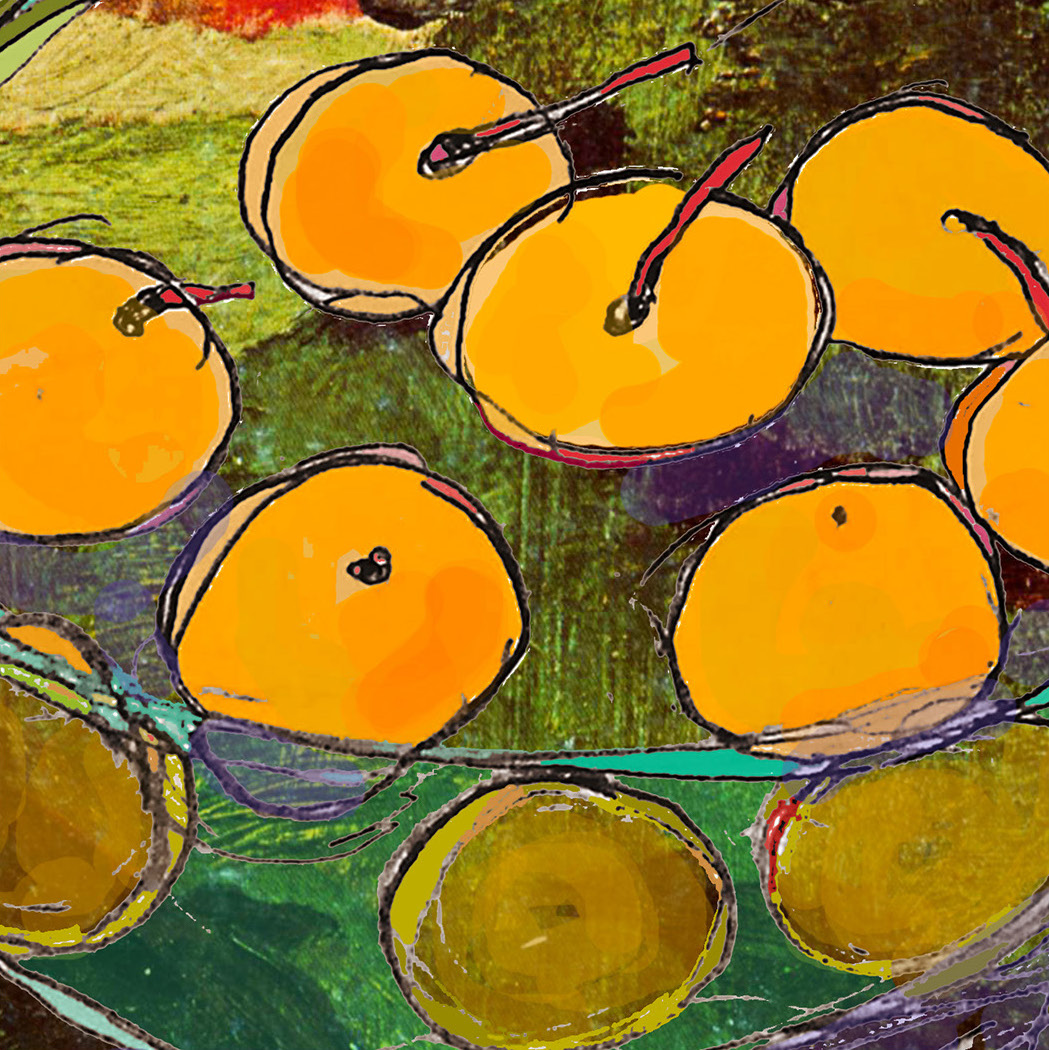
Dana Squires
Apricots in Bowl
Pencil sketch, uploaded and digitally “painted,” then printed on glass panel
11 x 11 inches
2020
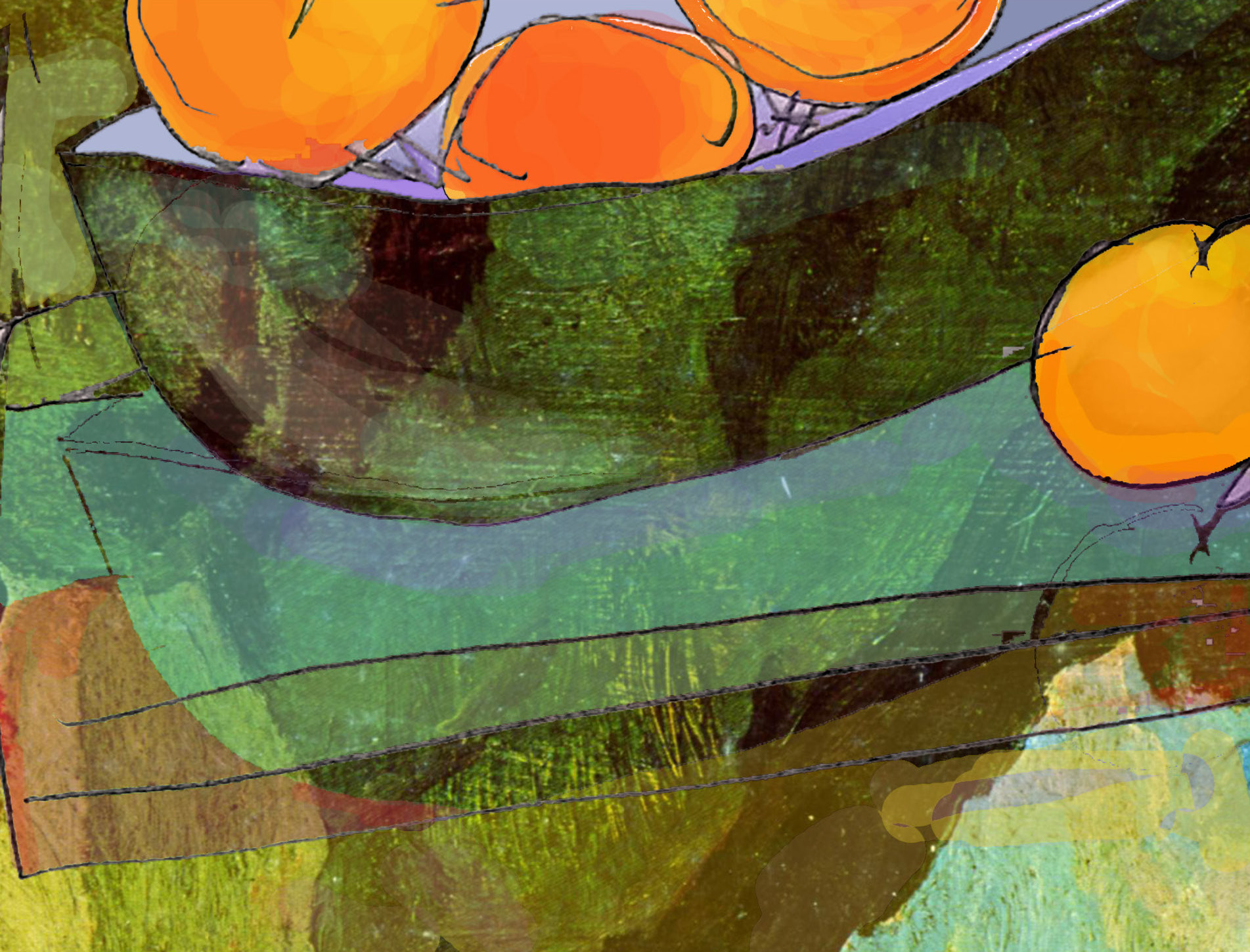
Dana Squires
Oranges in Green Bowl
Pencil sketch, uploaded and digitally “painted,” then printed on glass panel
11 x 11 inches
2020
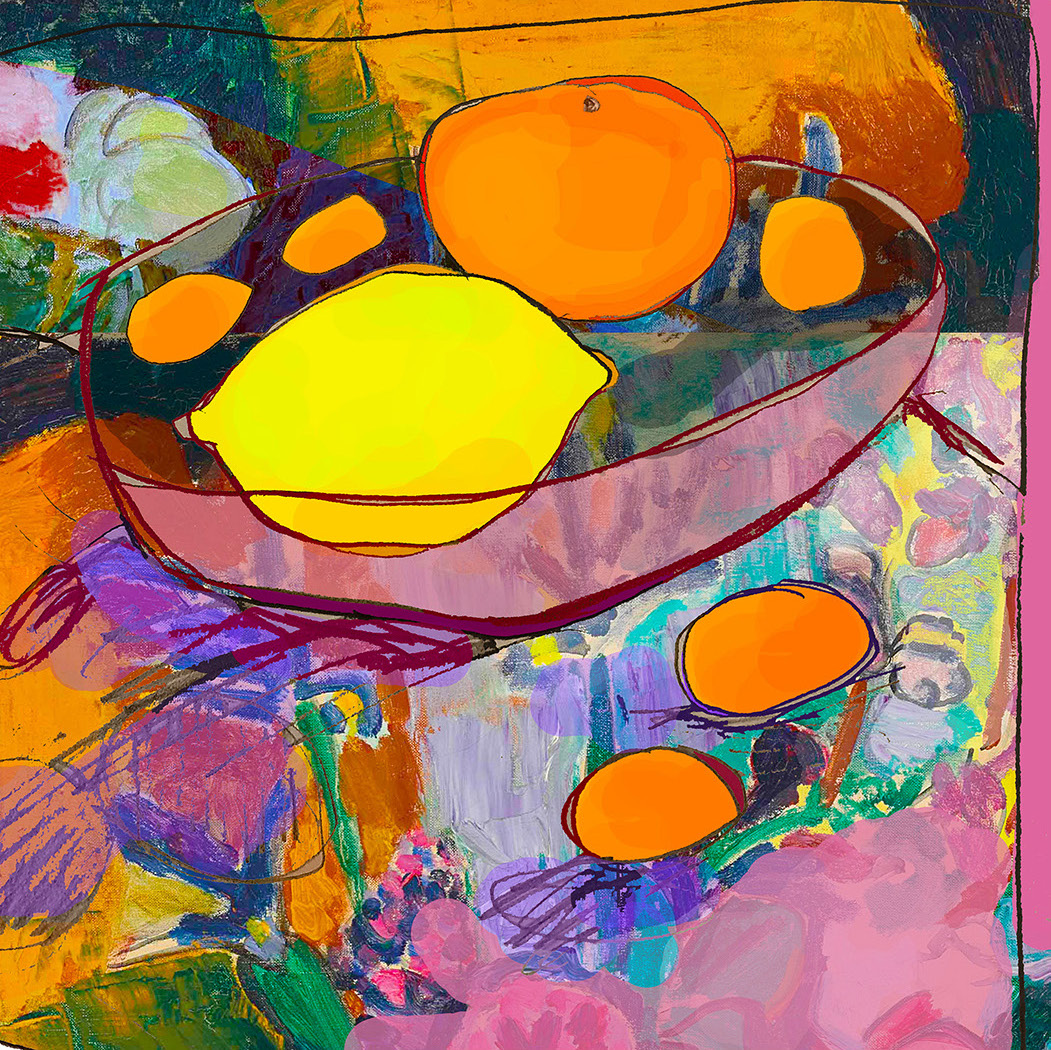
Dana Squires
Lemon and …
Pencil sketch, uploaded and digitally “painted,” then printed on glass panel
11 x 11 inches
2020
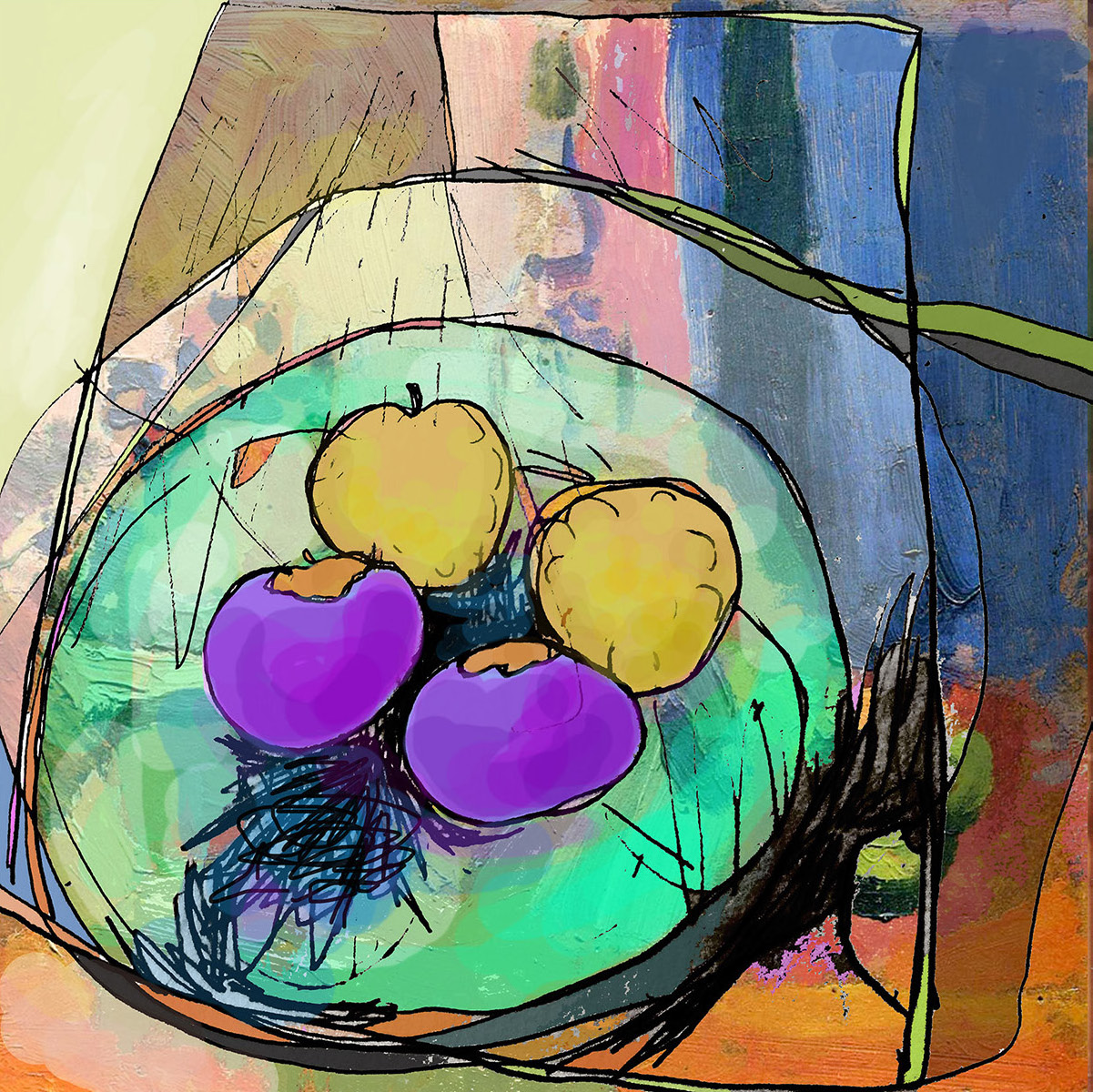
Dana Squires
Soursop and Mangosteens
Pencil sketch, uploaded and digitally “painted,” then printed on glass panel
11 x 11 inches
2019
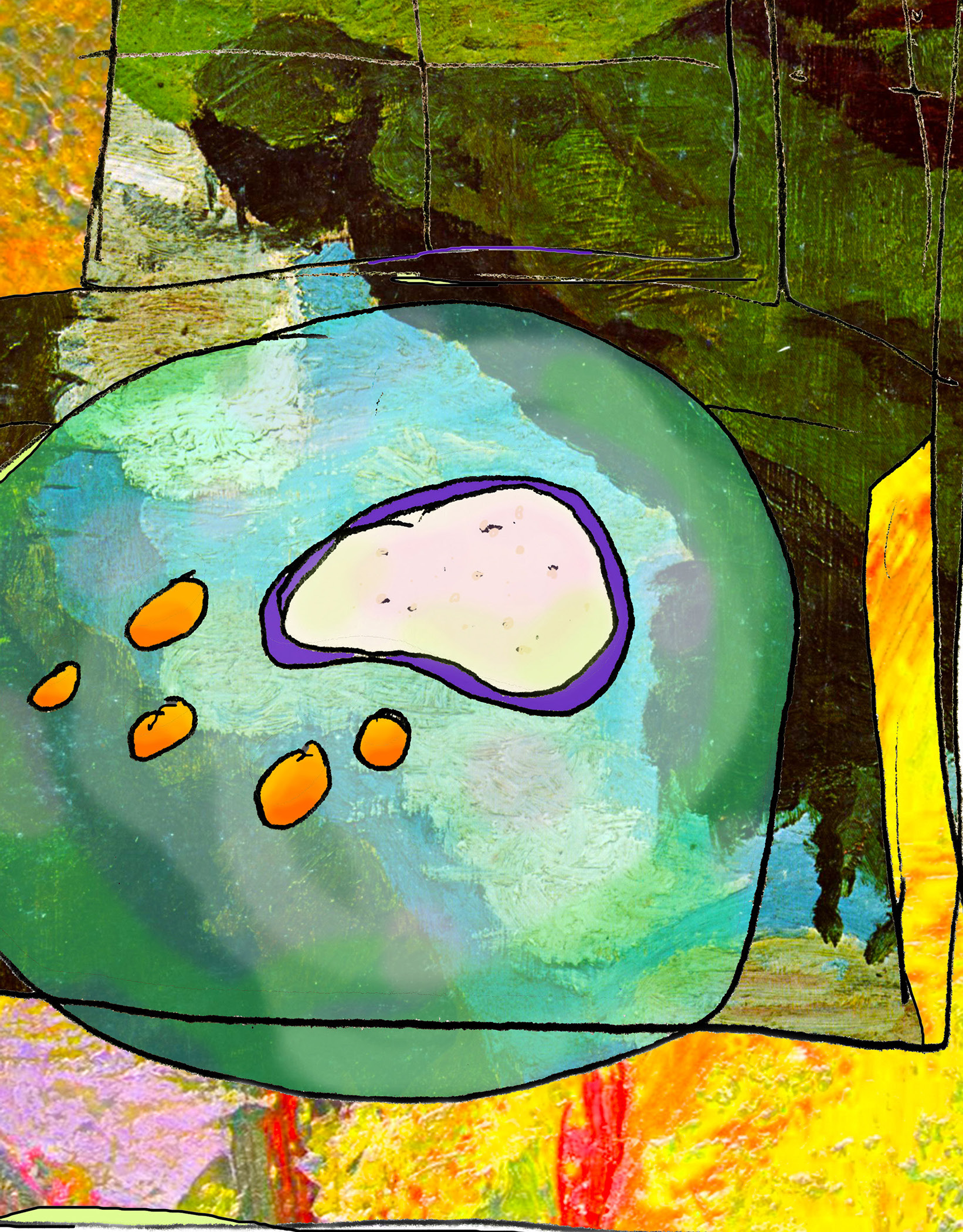
Dana Squires
Eggplant on Table
Pencil sketch, uploaded and digitally “painted,” then printed on glass panel
11 x 15.5 inches
2020
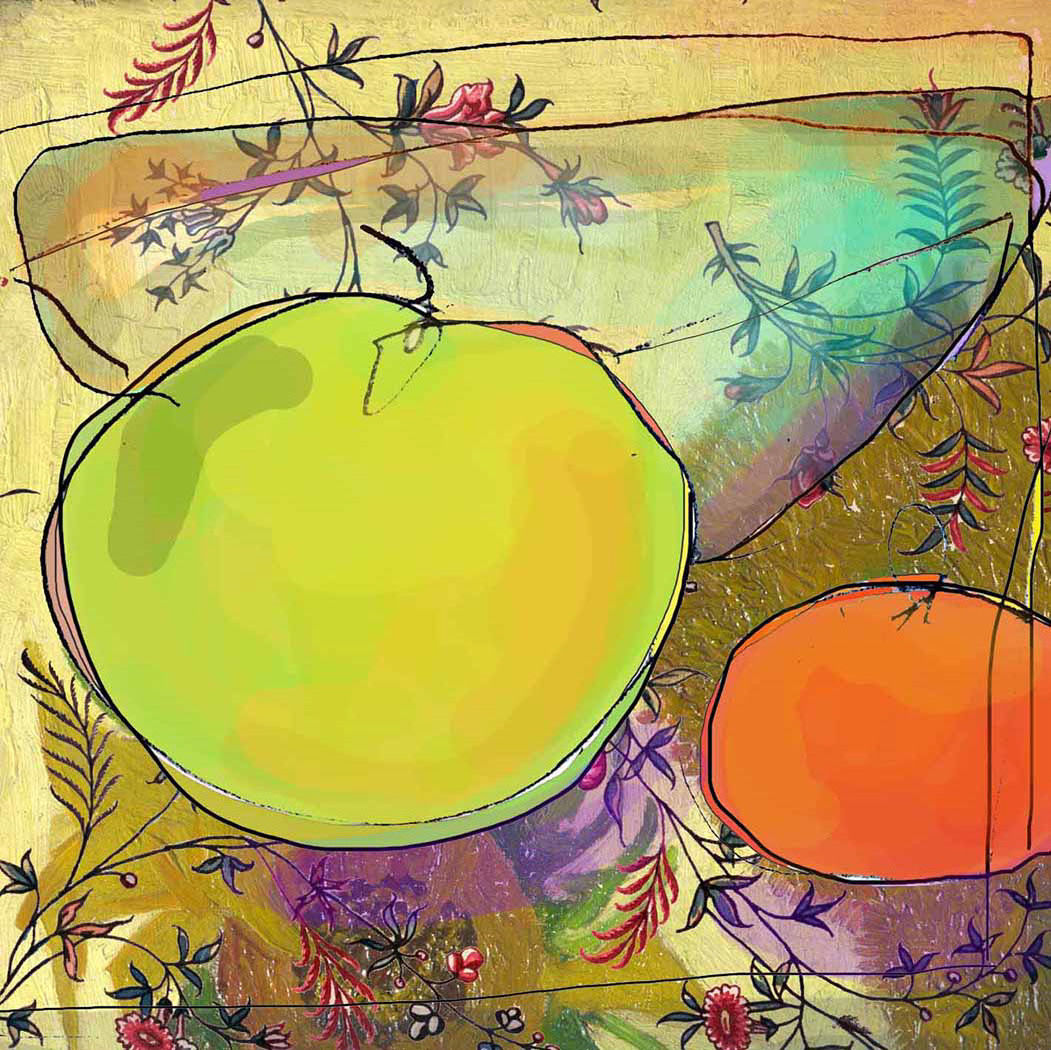
Dana Squires
Two Fruits
Pencil sketch, uploaded and digitally “painted,” then printed on glass panel
11 x 11 inches
2018
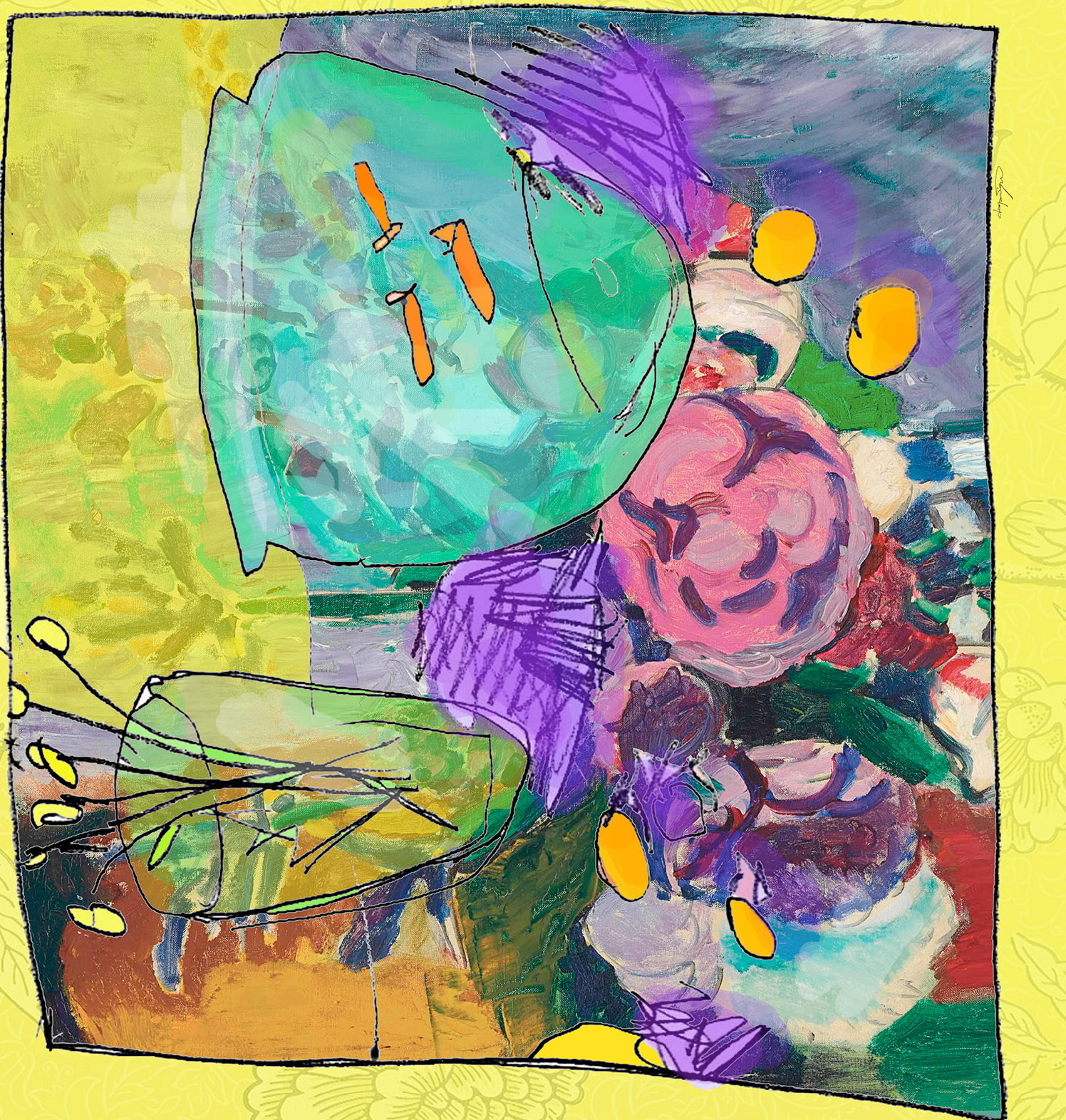
Dana Squires
PMatisse Goldfish
Pencil sketch, uploaded and digitally “painted,” then printed on glass panel
23 x 23 inches
2018
Jerry Slough
artist statement
Constructing Memory explores the relationship between memory, the camera and the screen. These ideas are all layered into photographic collages, sculptures and installations throughout the exhibition.
Memory itself is an act of imagination, an act of adding and subtracting. Memories, like photographs, are constructs. They are formed in layers within our minds. Every time we access a memory we have the potential of adding or losing information. Memories can be false or even implanted. The camera is viewed as a replicator of the world, but the camera is flawed. It cannot record as much visual light as the eye can see, so some information is always lost — like the recalling of a memory.
The works in Constructing Memory are created by abusing the camera’s inability to accurately see. The camera is used as a tool of abstraction by repeatedly photographing the same image from the computer screen — adding and subtracting information with each new photograph. Various materials, media and forms of display are used to invite the viewer to move around the work and reinforce the idea that the formation of memory is an act of artifice.
My work also examines the relationship between social media and memory. In the age of devices, we are constantly bombarded by the memories force fed to us in our news feeds. Facebook and Instagram remind us what we were doing this day any random number of years ago. Social media remembers lost loves, the death of a friend, pet or a loved one in unforgiving ways that our minds would not. Constructing Memories is an analysis of how our minds create, and how memories are constructed and built rather than recorded.
artist bio
Jerry Slough is a photographer and visual artist from San Diego, California currently living and working in Ellensburg Washington. He received his bachelor’s of visual and performing arts from California State University San Marcos in 2016. He is currently an MFA Candidate at Central Washington University and will receive his MFA in June. His work explores the digital world we live in and the relationships between human and machine interaction as well as reciprocal relationships. His current work looks into the consequences of surveillance capitalism, and information about ourselves we freely to large technology corporations regularly.
Jerry’s work has been exhibited nationally and internationally. He was the 2015 recipient of the Funes Digital Arts Award, awarded the Washington State Behnke Fellowship for Masters of Fine Arts students, and is featured in the permanent collection of California State University. His work is currently on display for 2021 at Portlands Blue Sky Gallery, PNW drawers exhibition.
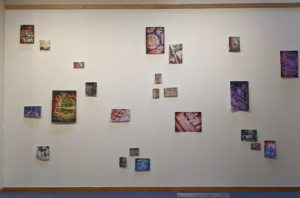
Jerry Slough
Constructing Memory
“Mesmerized, Designer, Ghost, Old Film, “I’d Rather Have Pizza and Beer,” Taurus, Nebula, Societe, Alesmith, ECFA ASG, SeA, Smile, Energy, That Night, Dog Park, You Skulls,Organic Shapes x2, Full Moon, Flowers, Galaxies, Books, Science “
Archival Inkjet print on Japanese mulberry paper, T pins
2020 $1500
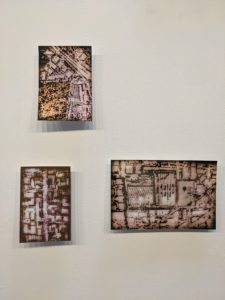
detail, Constructing Memory installation Jerry Slough Constructing Memory “Mesmerized, Designer, Ghost, Old Film, “I’d Rather Have Pizza and Beer,” Taurus, Nebula, Societe, Alesmith, ECFA ASG, SeA, Smile, Energy, That Night, Dog Park, You Skulls,Organic Shapes x2, Full Moon, Flowers, Galaxies, Books, Science ” Archival Inkjet print on Japanese mulberry paper, T pins 2020 $1500
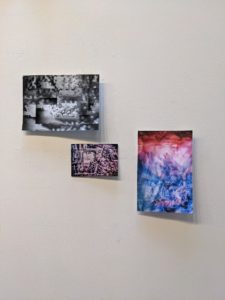
detail, Constructing Memory installation Jerry Slough Constructing Memory “Mesmerized, Designer, Ghost, Old Film, “I’d Rather Have Pizza and Beer,” Taurus, Nebula, Societe, Alesmith, ECFA ASG, SeA, Smile, Energy, That Night, Dog Park, You Skulls,Organic Shapes x2, Full Moon, Flowers, Galaxies, Books, Science ” Archival Inkjet print on Japanese mulberry paper, T pins 2020 $1500
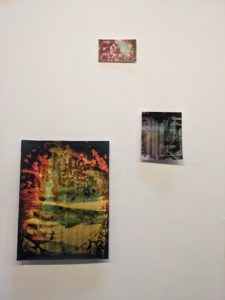
detail, Constructing Memory installation Jerry Slough Constructing Memory “Mesmerized, Designer, Ghost, Old Film, “I’d Rather Have Pizza and Beer,” Taurus, Nebula, Societe, Alesmith, ECFA ASG, SeA, Smile, Energy, That Night, Dog Park, You Skulls,Organic Shapes x2, Full Moon, Flowers, Galaxies, Books, Science ” Archival Inkjet print on Japanese mulberry paper, T pins 2020 $1500
Mel Hewitt
artist statement
I explore the narrative of the book: as an art piece and as a means of holding and conveying knowledge. The definition of a book is more than just papers with words printed on them glued between two covers. It’s fluid. There is always a component of “traditional” bookbinding in my works, that is, a component of what we know right now to be a “book,” whether it’s in its construction or aesthetic. The overarching impression of my pieces is to be something that you are not used to. With my artist books I force a new view on what a book is, specifically by changing how the viewer interacts with it. One way I really enjoy employing this is by creating books for adults that bring them back to what it felt like to interact with books as a child, implementing things such as pop-up mechanics, bright boxy colors, and elements of play. Interacting with my books becomes a full sensory experience; one that furthers the definition of what a book is.
artist bio
Mel Hewitt is a book artist working her way towards becoming proficient in all aspects of the book arts. Her skills currently lie in traditional and contemporary binding structures and finishing techniques, paper marbling, paste papers, and incorporating letter press, screen printing, and relief printing into her pieces. Mel’s work ranges from utilitarian one-of-a-kind journals to sculptural artist books. It is her mission to explore the narrative of the book: as an art piece and as a means of holding and conveying knowledge. You can learn more about her and her work at melismaking.com.
She resides in Spokane Valley, WA with her husband and two kids.
www.instagram.com/mel.the.maker/
Mel Hewitt
The Patterns of Quarantine
Pop up book, letterpress, relief print
5.5 x 8.5 inches
2020
At the start of the pandemic I grappled with the overtly contrasting viewpoints and opinions of what was happening and how people were handling it together and handling each other. I couldn’t see how it would end up, where humanity would be when the crisis ended. I wanted to document what humanity was in the moment when the world seemed to be crashing down. The pop-up form was chosen because of the way in which it brings specific things to the forefront of our attention. The choice to tell the story of the onset of the Covid-19 pandemic in the style of children’s fairy tales was made to convey the unbelievable historic event we found ourselves in, the stuff that can only be found in fiction.
Mel Hewitt
Going On and On
Book, letter press, alcohol ink
9 x 6.5 x 1.5 inches
2020
Kate Chopin’s novella “The Awakening” has been a story that has stuck with me ever since I first read it in my high school AP English class. The premise of the story is Edna’s coming into herself by foregoing expectations from others and setting herself free to be her own person. Boxed in by societal, marital, spiritual expectations she finds the only way she can be true is to swim out into the sea with the intention of never swimming back. The interaction of this book is a tangible expression of the opening of the box of expectations and letting a woman free to be herself.
Mel Hewitt
My Sides of the Mountains
Book, watercolor, letterpress
7.25 x 3.25 x 4.5 inches
2020
Place and emotion are irrevocably linked in memory. The process of pulling out memories is oftentimes difficult, bringing the image into view a delicate process, but the emotions instantaneous. Memory recall comes in a framed view, either as a serious of images played in succession like a movie, or as a single still image like a photograph. The use of watercolors with its fades and soft lines evokes the natural impermanence of memory. The individual compartmentalized books, while part of the whole memory of “mountains” are unique and singular. The leather thong keeps the memories closed up tight to keep them from flying off unwanted on their own. The book invites the reader to experience my memories and emotions of five places and emotions in my life.
Love the art? Want to take it home?
You can purchase artwork at the Chase Gallery! For purchasing or with any questions about the gallery or the artwork, please email Mika.


 For Kids
For Kids
